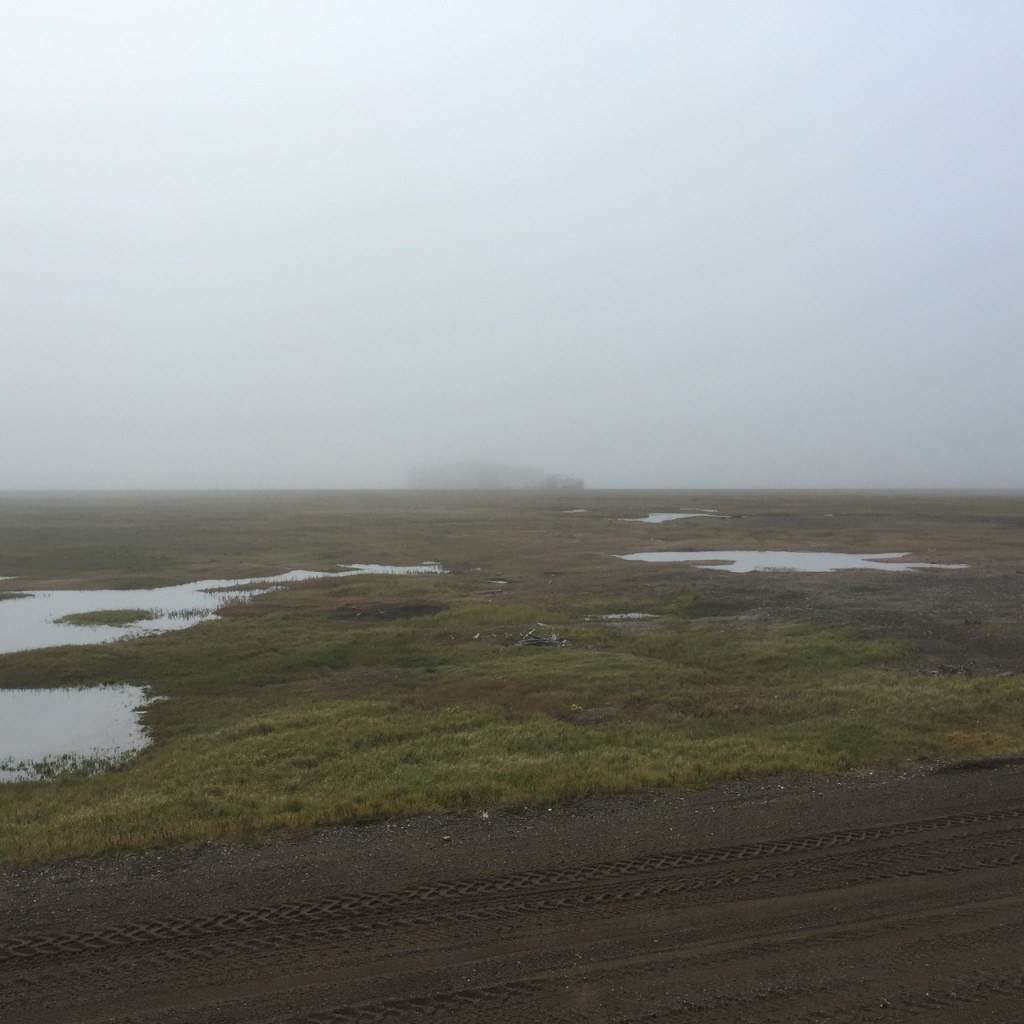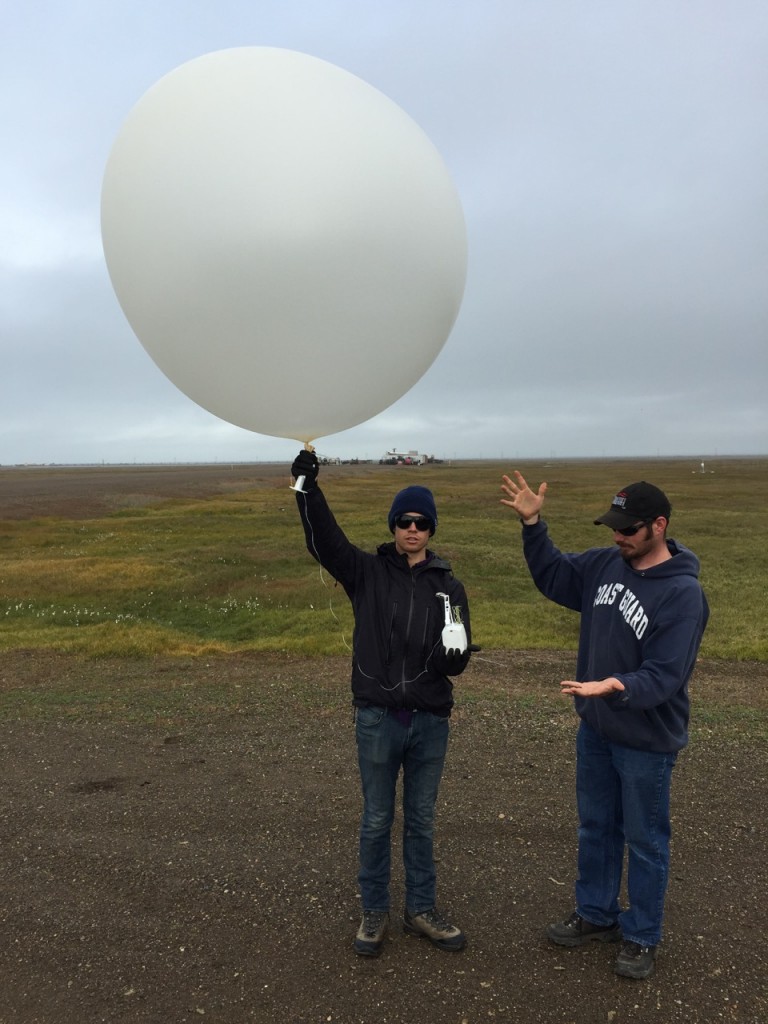Every morning since we arrived here, I’ve woken up at the same time (6:20 AKDT) in order to have a little time to wake up before our daily operations briefing at 6:45 AKDT. This morning, I woke up looked outside, saw sunshine, and went to take a shower. During that time, I formulated a plan for flights for the rest of the day — Nathan and Dale were on the first morning shift and Will and I had the second — which would involve something very similar to yesterday’s “rinse and repeat” plan. Send the plane on its way, await the inevitable interference, bring it down, and send it out again. I got myself dressed and headed to the dining area to get breakfast ready, looked outside and saw nothing. In the 15 minutes it took me to shower and get dressed, the entire tundra had been blanketed by a thick fog. I know that it was pretty thick because the large Oliktok Point hangar that is located approximately 450 m from the USAF facility was nowhere to be seen. The photo below shows what things looked like around 10:30, when the visibility had gotten *slightly* better… This sort of weather is really no good for flying here. Even if the aircraft had been flying exactly as they should, the potential to have a bear sneak up on you is something to avoid, if possible!

The fog, mid-morning. The dark shape in the middle of the photo is the hangar, around 450 meters away.
We had seen similar fog last week, which burned off rather quickly. But this was not the case today — it was not until around 1 pm that the fog got close to burning off, and even then it was never far away. We took advantage of that time and got a few flights in between lunch and dinner time, but as we made our way back to the USAF facility for dinner, fog, mist and clouds reoccupied the Oliktok skies.

CU undergraduate student Will Finamore keeps a watchful eye on the DataHawk 2 on final approach to landing during a break in the foggy weather. Although it looks very close to him, it was actually about 10 yards in front of him at the time.
Days like this are frustrating because they represent a day with very few measurements, but in some ways “down” days are an expected and necessary component of field work, particularly in the Arctic. Sometimes you just have to accept the fact that the weather can win and there’s nothing you can do about it. Not to say we were idly sitting all day — we all took full advantage of the window to catch up on work, ensure the aircraft maintenance is up to date and analyze some of the measurements obtained to date. Nathan even got a chance to launch the 3:30 PM weather balloon. Tomorrow is another day, hopefully with better weather!

CU graduate student Nathan Curry (left) and Oliktok operations technician Wessley King (right) get ready to launch the 330 radiosonde from Oliktok Point!
